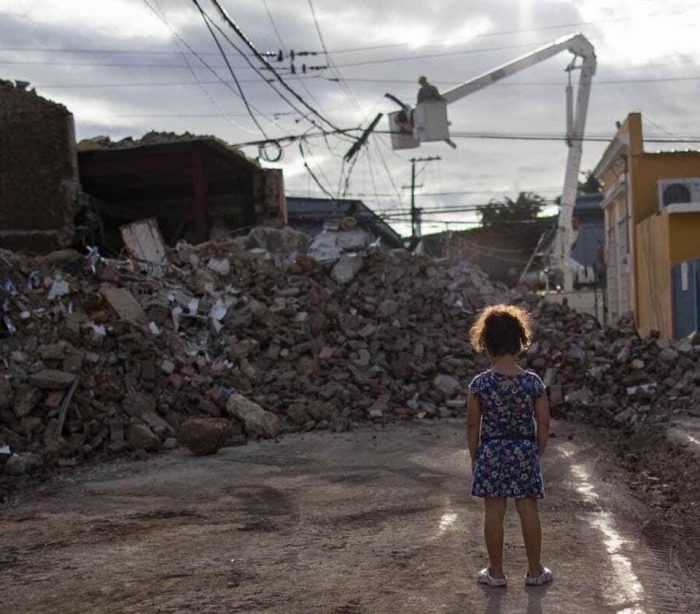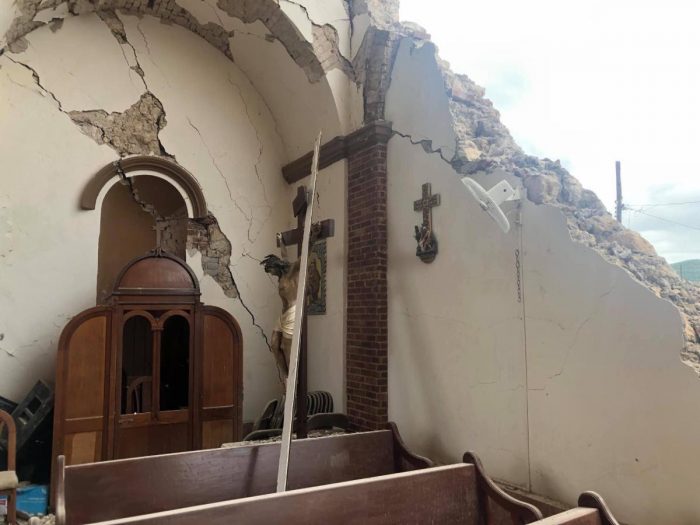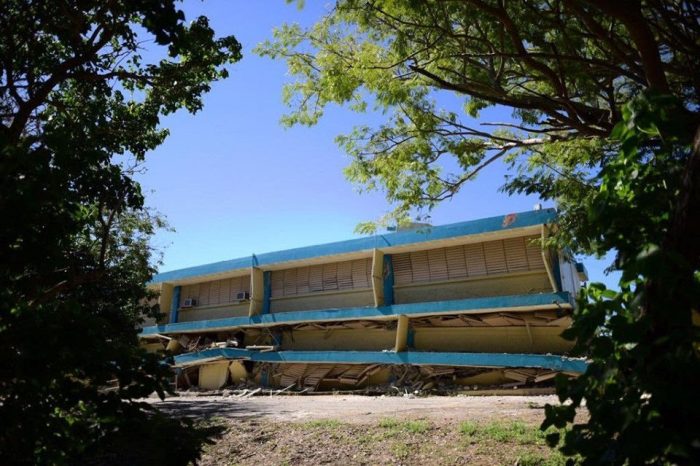Press
Update on the impact of the earthquakes in Puerto Rico
Rene Vargas Martinez, Inclusiv Program Officer, visited his family in Puerto Rico over the Three Kings holiday and reports back on the damage to people and property caused by the recent earthquakes on the island.
Holidays are a big event for Puerto Ricans. We celebrated the new year full of hope. Even with the economic hardships brought on by harsh austerity measures – and the arbitrary freeze of federal aid to the island – mass protests this past summer had forced the ouster of a corrupt government. Puerto Rico is at a new crossroads. There are still issues with power and infrastructure, but after a difficult spell, there was a feeling that things were changing for the better.
Since the end of December, seismic activity increased in the south of the island, but it was not significant enough to cause panic, and the holidays were happily celebrated. Three Kings Day on January 6, commemorates the biblical story of the Three Kings that crossed the desert to bring gifts to baby Jesus. This is a big event, particularly for children. They pick grass and leave it out to feed the camels in the evening and receive gifts in return on the morning of Three Kings Day. The afternoon of Three Kings Day the first earthquake rocked the island.
The epicenter of the 5.4 quake was in the South, near the towns of Guanica, Guayanilla, Ponce and Yauco. In the south and center of the island many homes are built on concrete columns or “zancos”. The homes of many lower income residents are not up to code and are often not certified by structural engineers. Concrete houses are typically safe; their height and concrete’s strength protects residents from flooding and hurricane force winds. Most of these houses survived Maria, but were vulnerable to the earthquake’s tremors. Many structures, including schools, churches, and bridges, started to crack and fall under their own weight. The authorities urged persons living in elevated houses to evacuate. This warning saved lives.
The next morning, at 4:24 am, the ground started to shake violently. Scared kids woke up to their panicked parents, and together they abandoned their homes in the middle of the night. Power suddenly went out everywhere. Most of Puerto Rico’s power plants are in the south. One of the biggest, Costa Sur, which maintained power during Hurricane Maria, suffered heavy damage. Responsible for 30% of the island’s power generation, the damaged Costa Sur caused a chain reaction that prompted other power plants to shut down. Cell signals were lost, and access to internet and text messaging became unreliable. We learned through AM radio that a 6.4 earthquake had just rocked the island. I was 60 miles away from the epicenter and felt our family home shake. 95% of the country’s schools were built before the 1980’s and do not meet current structural standards. Many of them, especially in the south, collapsed, cracked and buckled. Others showed significant structural damage.
At 7:24 am, as people recovered and processed what had happened, the ground moved again – an aftershock! More buildings collapsed. As the authorities scrambled to deal with the emergency, smaller aftershocks kept the ground moving. Fear led residents to abandon their houses, setting up camp in parking lots and other open air spaces. People were, and still are, anxious and scared. After a three day blackout, power – with rolling blackouts – is back on most of the island.
On January 11, I woke up to another 6.0 earthquake. Federal and state governments have been slow to react, and people are tired of waiting. The ineptitude of the federal and state bureaucracy has been shamed by the solidarity of thousands of Puerto Ricans who have taken it upon themselves to fill the void. Non-profits, financial coops and community organizations are playing a huge role in the relief effort. Huge convoys with food, water, tents, diapers and other materials traveled from north to south this past weekend. Residents of the north and east of the island are offering shelter to refugees from the south and west. This is people helping people at its best.
The south is already an economically depressed part of Puerto Rico. The earthquakes will certainly make it worse. Tackling new challenges around housing, preserving small businesses, and jobs to avoid an exodus, and protecting the integrity of power generation at a national level, must be a priority. Financial co-ops, community organizations, non-profits, and other non-governmental organizations will have to play a vital role in addressing these challenges. Our best hope is to continue to make sure they are are in a position to respond and help.
https://www.gofundme.com/f/puerto-rico-credit-union-earthquake-relief?utm_source customer&utm_medium=email&utm_campaign=p_cf+share-flow-1
New York Credit Union Foundation: https://donatenow.networkforgood.org/NewYorkCreditUnionFoundation
WOCCU’s Worldwide Foundation: https://www.doglobalgood.org/give





